Abstract
The method described in the previous paper was used to induce secondary responses in spleen cells from CBA/H mice, pre-primed with lymphocytic choriomeningitis (LCM) virus by culturing them with LCM-infected peritoneal cells. The cytolytic effector cells thus generated have been characterized. Effector cells were sensitive to treatment with anti-theta ascitic fluid and complement. Separation procedures based on rosetting of certain categories of lymphocytes with sheep red cells through an Isopaque-Ficoll gradient indicated that effector cells lacked surface immunoglobulin and generally did not bear Fc receptors. Cytolytic activity was restricted by the H-2 gene complex. Killing had single-hit characteristics. All these results suggested that the cells from memory cultures mediating cytolysis were T cells. There was evidence for two T cell subsets, a major subpopulation directed against antigens on infected targets and a minor one directed against antigens on uninfected, H-2-compatible targets. Specificity was present at the infected cell:memory responder and killer:target levels between LCM virus (an arenavirus) and ectromelia virus (a poxvirus).
Full text
PDF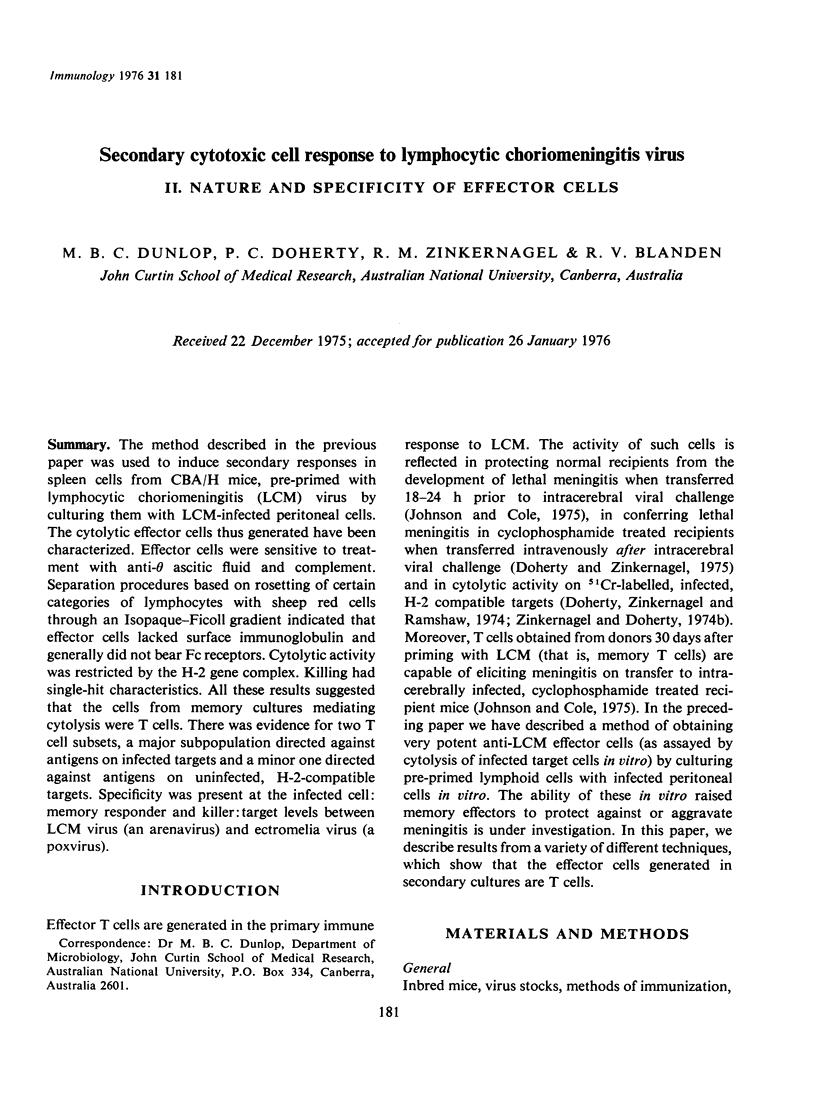
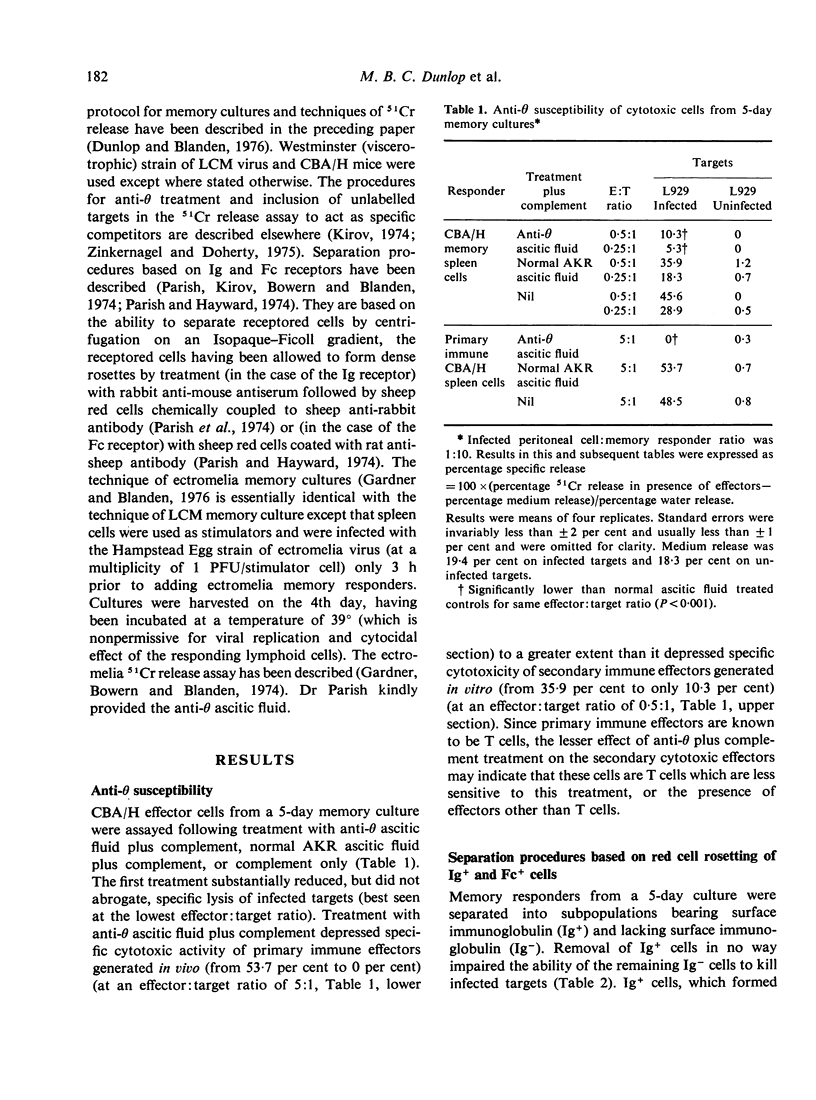
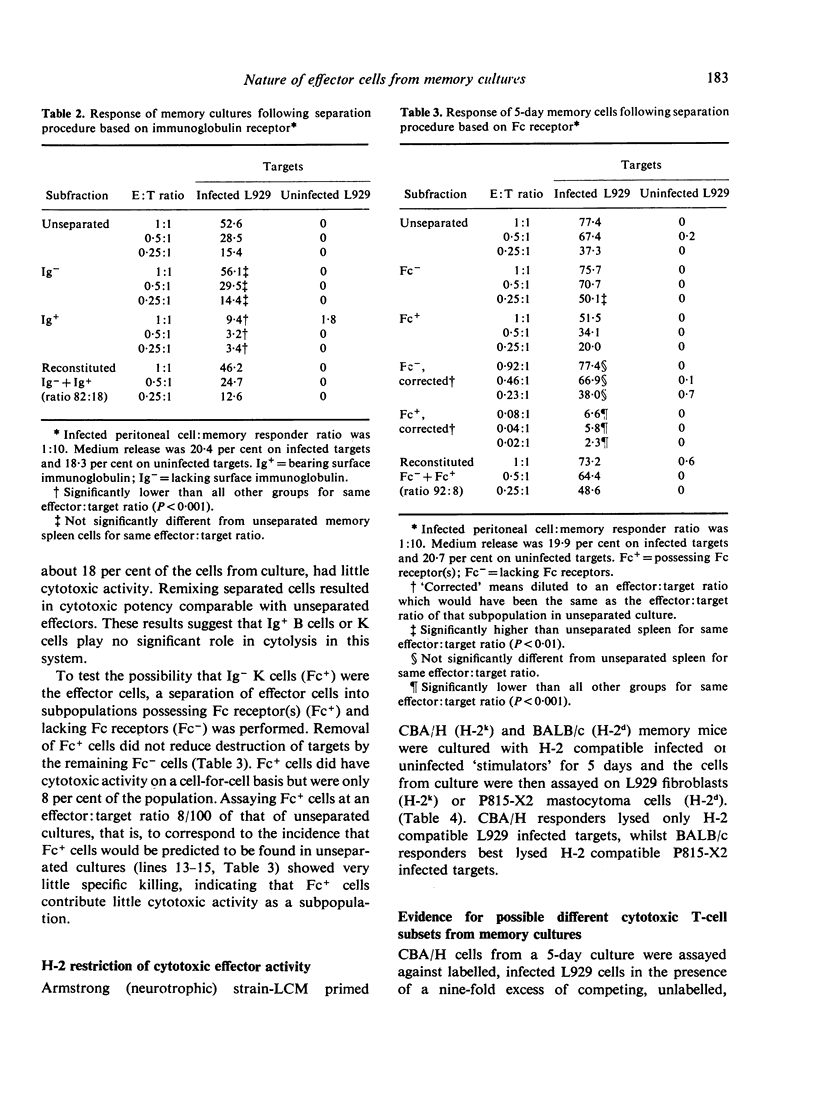
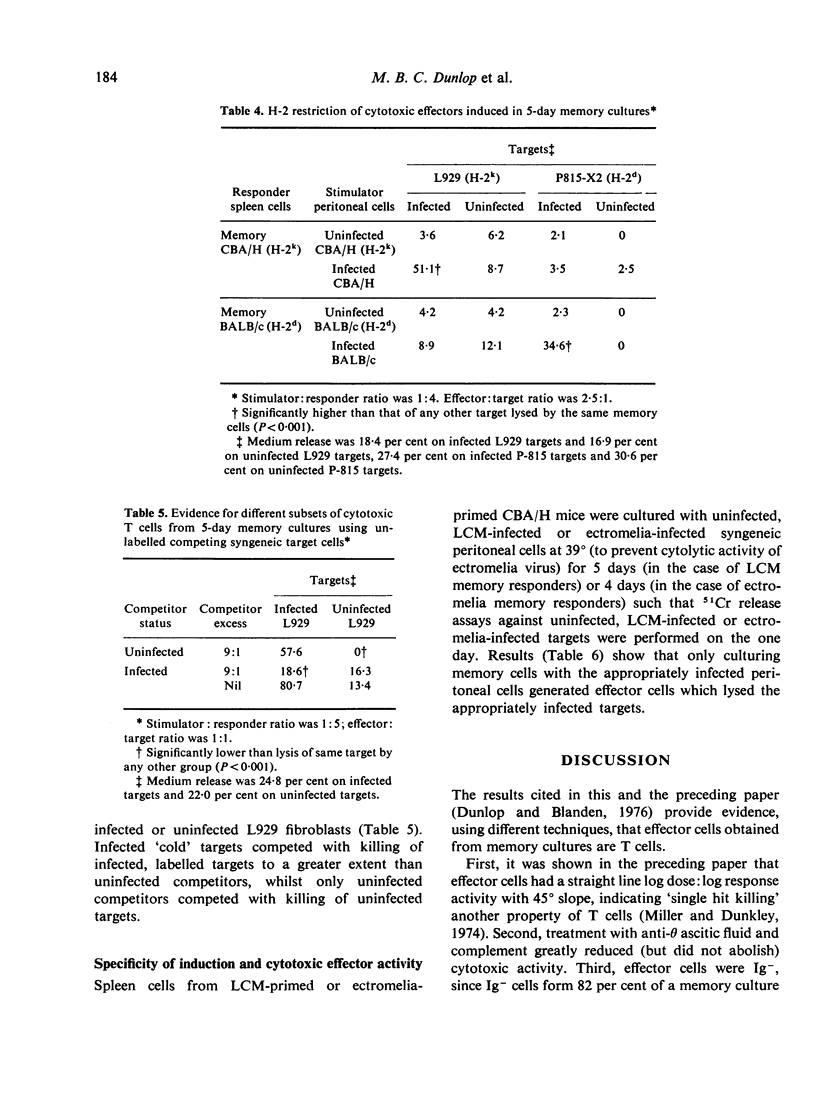
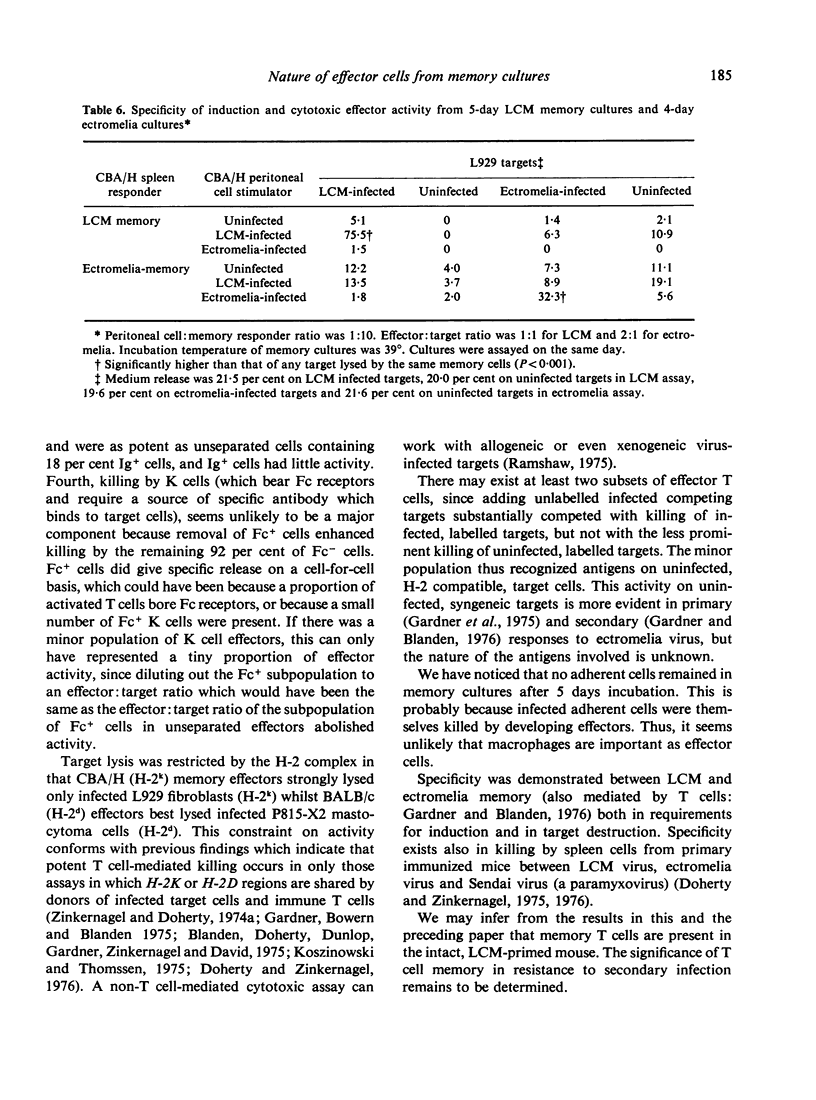
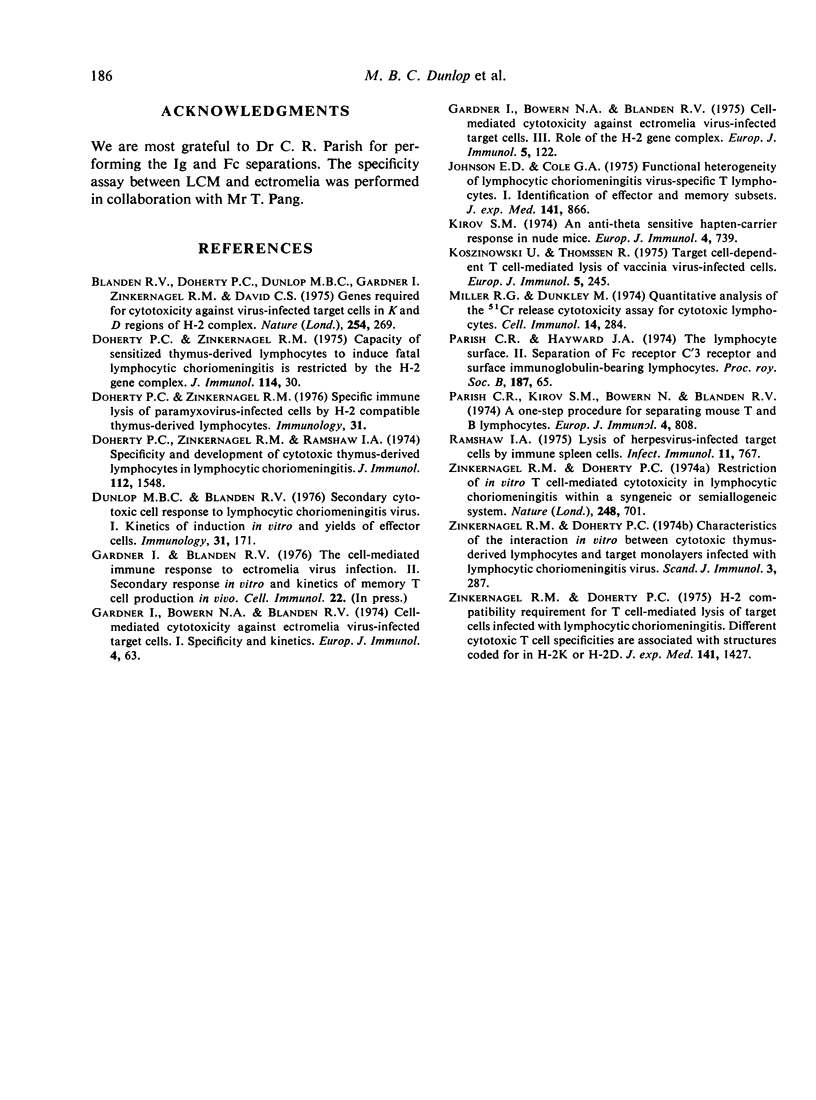
Selected References
These references are in PubMed. This may not be the complete list of references from this article.
- Blanden R. V., Doherty P. C., Dunlop M. B., Gardner I. D., Zinkernagel R. M., David C. S. Genes required for cytotoxicity against virus-infected target cells in K and D regions of H-2 complex. Nature. 1975 Mar 20;254(5497):269–270. doi: 10.1038/254269a0. [DOI] [PubMed] [Google Scholar]
- Doherty P. C., Zinernagel R. M. Capacity of sensitized thymus-derived lymphocytes to induce fatal lymphocytic choriomeningitis is restricted by the H-2 gene complex. J Immunol. 1975 Jan;114(1 Pt 1):30–33. [PubMed] [Google Scholar]
- Doherty P. C., Zinkernagel R. M., Ramshaw I. A. Specificity and development of cytotoxic thymus-derived lymphocytes in lymphocytic choriomeningitis. J Immunol. 1974 Apr;112(4):1548–1552. [PubMed] [Google Scholar]
- Dunlop M. B., Blanden R. V. Secondary cytotoxic cell response to lymphocytic choriomeningitis virus. I. Kinetics of induction in vitro and yields of effector cells. Immunology. 1976 Aug;31(2):171–180. [PMC free article] [PubMed] [Google Scholar]
- Gardner I. D., Bowern N. A., Blanden R. V. Cell-medicated cytotoxicity against ectromelia virus-infected target cells. III. Role of the H-2 gene complex. Eur J Immunol. 1975 Feb;5(2):122–127. doi: 10.1002/eji.1830050210. [DOI] [PubMed] [Google Scholar]
- Gardner I., Bowern N. A., Blanden R. V. Cell-mediated cytotoxicity against ectromelia virus-infected target cells. I. Specificity and kinetics. Eur J Immunol. 1974 Feb;4(2):63–67. doi: 10.1002/eji.1830040202. [DOI] [PubMed] [Google Scholar]
- Johnson E. D., Cole G. A. Functional heterogeneity of lymphocytic choriomeningitis virus-specfic T lymphocytes. I. Identification of effector amd memory subsets. J Exp Med. 1975 Apr 1;141(4):866–881. [PMC free article] [PubMed] [Google Scholar]
- Kirov S. M. An anti-theta sensitive hapten-carrier response in nude mice. Eur J Immunol. 1974 Nov;4(11):739–745. doi: 10.1002/eji.1830041107. [DOI] [PubMed] [Google Scholar]
- Koszinowski U., Thomssen R. Target cell-dependent T cell-mediated lysis of vaccinia virus-infected cells. Eur J Immunol. 1975 Apr;5(4):245–251. doi: 10.1002/eji.1830050405. [DOI] [PubMed] [Google Scholar]
- Miller R. G., Dunkley M. Quantitative analysis of the 51Cr release cytotoxicity assay for cytotoxic lymphocytes. Cell Immunol. 1974 Nov;14(2):284–302. doi: 10.1016/0008-8749(74)90212-3. [DOI] [PubMed] [Google Scholar]
- Ramshaw I. A. Lysis of herpesvirus-infected cells by immune spleen cells. Infect Immun. 1975 Apr;11(4):767–769. doi: 10.1128/iai.11.4.767-769.1975. [DOI] [PMC free article] [PubMed] [Google Scholar]
- Zinkernagel R. M., Doherty P. C. Characteristics of the interaction in vitro between cytotoxic thymus-derived lymphocytes and target monolayers infected with lymphocytic choriomeningitis virus. Scand J Immunol. 1974;3(3):287–294. doi: 10.1111/j.1365-3083.1974.tb01259.x. [DOI] [PubMed] [Google Scholar]
- Zinkernagel R. M., Doherty P. C. H-2 compatability requirement for T-cell-mediated lysis of target cells infected with lymphocytic choriomeningitis virus. Different cytotoxic T-cell specificities are associated with structures coded for in H-2K or H-2D;. J Exp Med. 1975 Jun 1;141(6):1427–1436. doi: 10.1084/jem.141.6.1427. [DOI] [PMC free article] [PubMed] [Google Scholar]
- Zinkernagel R. M., Doherty P. C. Restriction of in vitro T cell-mediated cytotoxicity in lymphocytic choriomeningitis within a syngeneic or semiallogeneic system. Nature. 1974 Apr 19;248(5450):701–702. doi: 10.1038/248701a0. [DOI] [PubMed] [Google Scholar]


